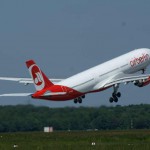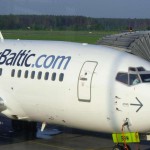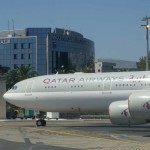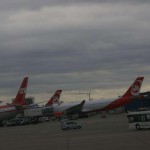Global airline capacity for February 2010 shows positive growth compared to February 2009, reports OAG, the world’s leading aviation data business with its monthly report on trends in the supply of airline flights and seats.
Chicago – This marks the sixth consecutive month in which overall airline capacity has shown growth, with 272.7 million available seats this month, an increase of 5% over February 2009. Global frequencies are also showing growth, with an increase of 4%, with a total of 2.2 million flights scheduled for February 2010. Global frequency and capacity in the low-cost sector are up by 11% compared to a year ago, with 40,704 more flights and 6.1 million more seats.
The only regional decline to report for February 2010 is for traffic within North America where frequency and capacity have reduced by 1% (11,210) and 2% (1,512,278) respectively. However, frequency and capacity to and from the region have shown a positive growth of 3% and 2%. Overall, flights to and from Europe show positive growth compared to February 2009, with 6% more flights and 4% more seats. Figures for Asia show an increase both to and from the region and also within. For services to and from the region, there is an increase of 5% in flights and 4% in capacity, while intra-regionally, frequency and capacity is up by 11% and 10% respectively. Latin America, Central/South America, Africa and the Middle East also show increases in frequency and capacity.
“It is fascinating how much the movement in flight frequency and seat capacity seems to reflect the regional economic situation. Asia’s economy (except Japan) is gradually and carefully recovering and so are parts of Europe/the Middle East/Africa region, while North America and Japan appear to have difficulty and are struggling to come out of this recession,” said Mario M. Hardy, Vice President Asia Pacific, OAG Aviation.
Analysis of major routes reveals increases in many parts of the world, while decreases continue in the transatlantic market between North America and Western Europe. That route has 5% fewer seats (237,269) and 5% less flights (964) for the month. Carriers between Western Europe and Asia show a frequency decline of 2% and 4% reduction in capacity. Routes between Western Europe and Africa show a healthy 20% increase in frequency and 19% increase in capacity. Service between North America and Central/South America are up compared to a year ago, while routes between Western Europe and the Middle East have also grown compared to February 2009.
“This month, a number of new routes are being launched; the Asia Pacific region shows 174 new routes with a large number of them from Chinese carriers. In Europe, the Middle East and Africa, there are 210 new routes dominated by low-cost carriers, said OAG’s Hardy. “North America adds 108 routes with the majority being domestic flights and in Latin America, 17 routes were added mostly in the Caribbean. The increase in direct service is a global trend that has been driven by the increase in low-cost carrier services flying point-to-point, which benefits the consumers,” continued Hardy.
A hubs analysis shows impressive growth in South America Sao Paulo (GRU) and Bogota (BOG) with frequency increases of 24% and 17% respectively. The Middle East continues to perform well with Abu Dhabi (AUH) revealing a 24% growth in frequency for February 2010. Analysis of airports in North America shows that frequency at Atlanta Hartsfield remains unchanged at 70,651 compared to February 2009, while the major hub shows marginal growth of 1% in capacity, with 8,048,791 seats. European airports Paris Charles de Gaulle (CDG) and London Heathrow (LHR) both show declines in operations and capacity.
The figures are revealed in the February 2010 edition of OAG FACTS (Frequency & Capacity Trend Statistics), the dynamic monthly market intelligence tool providing the latest data on current passenger airline activity around the world.
OAG FACTS uses interactive graphs to display a visual trend of the performance of a specific airport, route, country or region from 2001 onwards, sourced from OAG’s consolidated database of global airline schedules.
Picture: Carstino Delmonte/ Touristikpresse.net

















